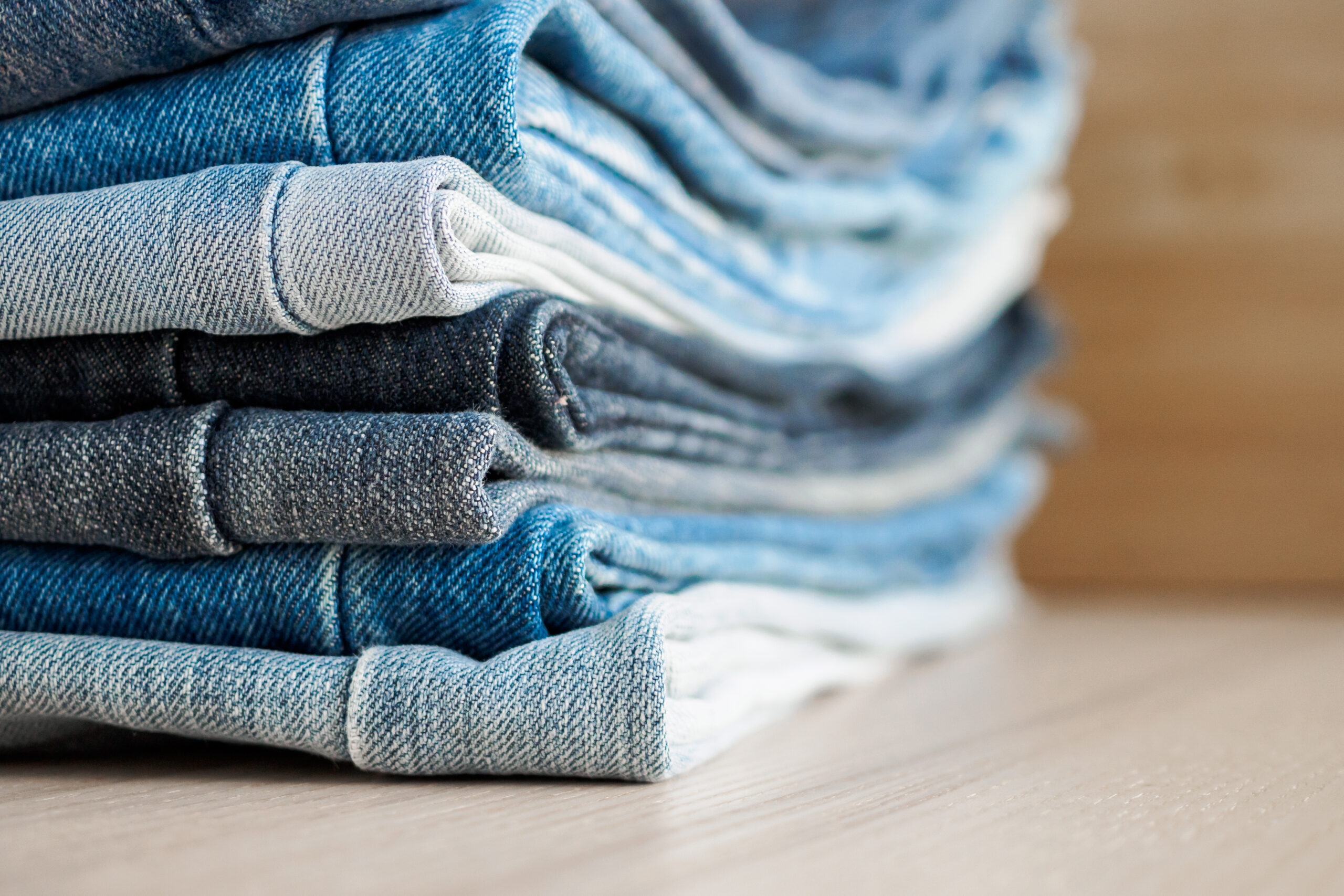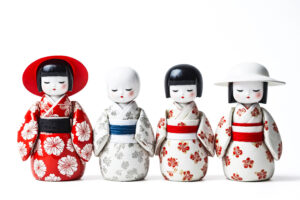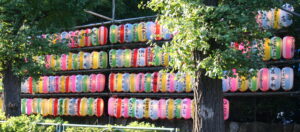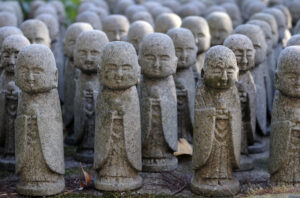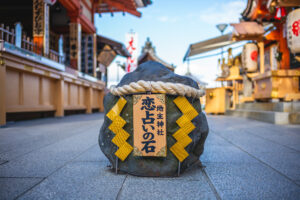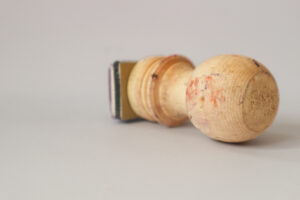In a world where fast fashion has dominated the market, the traditional art of Japanese denim stands out as a beacon of quality and craftsmanship. The meticulous process of creating Japanese denim, from the weaving of the fabric to the final finishing touches, showcases an unparalleled dedication to excellence. This article delves into the heart of Japanese denim techniques, exploring the rich heritage, precision, and innovation that make it a coveted material worldwide. Through an intimate look at the processes and people behind Japanese denim, we uncover the secrets that elevate this fabric beyond mere clothing to a form of art.
Exploring the Roots of Japanese Denim Craftsmanship
The journey of Japanese denim begins in the post-war period, where Japan, in its quest for economic recovery, looked towards traditional craftsmanship as a means of establishing a global identity. This era saw the birth of denim production in Japan, with manufacturers in areas such as Okayama taking the lead. These pioneers combined age-old techniques with a deep respect for the fabric, setting the foundation for what would become known as premium denim. The essence of Japanese denim craftsmanship lies in its adherence to quality over quantity, a philosophy deeply rooted in the Japanese culture of monozukuri, the art of making things. Over the years, this dedication to craft has not waned but has only grown stronger, driven by a relentless pursuit of perfection. The artisans behind Japanese denim treat each piece of fabric as a work of art, investing time and care that sets their work apart in the global textile industry.
The Weaving Wonders: How Selvedge Denim is Made
Selvedge denim, renowned for its durability and quality, is a testament to the weaving prowess of Japanese artisans. The term "selvedge" comes from "self-edge," referring to the tightly woven band on either edge of the fabric, preventing it from unraveling. This type of denim is produced on traditional shuttle looms, a technique that, while time-consuming and less efficient than modern methods, results in a denser, more durable fabric. The slow speed of the shuttle looms allows for the cotton yarns to be woven more tightly, creating the distinct selvedge finish. Japanese selvedge denim is characterized by its clean edges, a feature that is highly prized among denim enthusiasts. The meticulous process of creating selvedge denim reflects the Japanese ethos of perseverance and attention to detail, where the journey of creation is as important as the final product.
Dyeing to Last: The Secret of Indigo
The unique color of Japanese denim comes from the use of natural indigo dye, a practice that dates back centuries. Unlike synthetic dyes, natural indigo imparts a depth of color that cannot be replicated, with shades that evolve and fade over time to tell the story of the wearer. The process of dyeing with indigo is labor-intensive and requires a significant amount of skill and knowledge. The dye must be carefully managed and maintained at the right pH level, a task that demands daily attention. This commitment to using traditional dyeing methods contributes to the distinctive look and feel of Japanese denim, setting it apart from its mass-produced counterparts. As the denim ages, it develops a patina that reflects the natural wear patterns of its owner, making each piece uniquely personal.
From Cotton to Classic: The Fabric’s Journey
The creation of Japanese denim begins with the selection of cotton. Artisans prefer using high-quality, long-staple cotton, which provides the strength and softness that premium denim requires. From here, the cotton is spun into yarn, a process that can vary to produce different textures and weights. The yarn is then dyed with indigo and woven into fabric using the aforementioned selvedge technique. After weaving, the fabric undergoes a series of finishing processes, including sanforization, a method of pre-shrinking the denim to reduce future shrinkage. Each step of the fabric’s journey is overseen by skilled craftsmen who ensure that the highest standards of quality are met, resulting in a product that is both beautiful and built to last.
Stitch by Stitch: Precision in Japanese Denim
The construction of Japanese denim garments is marked by an extraordinary level of precision, where every stitch serves a purpose. Artisans use single-needle stitching, a method that, while slower, offers greater control and durability. The use of chain stitching on hems, a technique borrowed from traditional tailoring, adds strength and a distinctive roping effect to the denim. Reinforced rivets and bar tacks are applied to areas of stress, ensuring that each garment can withstand the rigors of daily wear. This meticulous approach to construction not only enhances the functionality of the denim but also its aesthetic appeal, with each detail contributing to the overall quality of the garment.
The Role of Vintage Looms in Denim Making
Vintage shuttle looms play a crucial role in the production of Japanese selvedge denim. These looms, many of which date back to the mid-20th century, are highly sought after for their ability to create densely woven, narrow fabric. The looms’ limited width results in the distinctive selvedge edge, a hallmark of quality and craftsmanship. Despite their age, these vintage machines are meticulously maintained, with artisans often likening them to living entities that require care and respect. The use of vintage looms is a testament to the Japanese philosophy of sustainability and respect for the past, where old methods are preserved and honored for their contribution to quality.
The Mastery of Washes in Denim Finishing
The final appearance and feel of Japanese denim are significantly influenced by the mastery of various washes and finishes. Techniques such as stone washing, acid washing, and distressing are carefully employed to achieve the desired level of wear and softness. However, unlike mass-produced denim, the focus is on subtlety and natural wear patterns rather than overt distressing. Some artisans favor leaving the denim raw, allowing the wearer to break it in naturally over time. This process creates a unique fade pattern that reflects the lifestyle of the individual. The mastery of these finishing techniques showcases the Japanese denim artisans’ deep understanding of the material, ensuring that each piece of denim is not only durable but also aesthetically pleasing.
Sustainability in the Art of Denim Creation
The production of Japanese denim is deeply rooted in principles of sustainability and environmental responsibility. The use of natural indigo dye, along with the focus on long-lasting quality, reflects a commitment to minimizing waste and reducing the impact on the environment. Many denim manufacturers in Japan are also adopting sustainable practices such as water recycling and the use of organic cotton. This ethos of sustainability extends to the preservation of traditional techniques, which, despite being more labor-intensive, are valued for their low environmental footprint. By choosing quality over quantity, Japanese denim manufacturers contribute to a more sustainable fashion industry, where garments are cherished and worn for years, if not decades.
The Influence of Japanese Denim Worldwide
Japanese denim has garnered a devoted following around the globe, influencing designers and fashion enthusiasts alike. Its reputation for quality and durability, combined with the artisanal techniques used in its creation, has set a benchmark for premium denim. Fashion labels and designers from Europe to America often collaborate with Japanese mills to produce limited-edition denim collections. The global denim community, including collectors and aficionados, looks to Japan for inspiration and innovation in denim production. This international acclaim has not only elevated the status of Japanese denim but has also fostered a greater appreciation for craftsmanship and sustainability in the fashion industry.
Behind the Seams: Japanese Denim Artisans
At the heart of Japanese denim’s prestige are the artisans who dedicate their lives to perfecting this craft. These craftsmen and women possess a deep understanding of the materials and techniques, often passed down through generations. Their commitment to excellence is evident in every yard of fabric and every stitch of clothing. These artisans embody the spirit of monozukuri, taking pride in their work and striving for constant improvement. Interviews with these craftsmen reveal a passion for denim that goes beyond mere occupation – it is an art form, a way of life. By recognizing the artisans behind the seams, we gain insight into the dedication and skill that make Japanese denim truly exceptional.
Innovations in Denim: Beyond the Traditional
While deeply rooted in tradition, the Japanese denim industry is also at the forefront of innovation. Manufacturers are constantly experimenting with new types of cotton, weaving techniques, and finishes to enhance the functionality and appeal of denim. Developments such as four-way stretch denim and denim that repels water and dirt are pushing the boundaries of what this classic fabric can do. These innovations reflect the dynamic nature of Japanese denim, where the respect for tradition coexists with a drive for progress and improvement. By embracing new ideas while honoring old practices, Japanese denim remains relevant and highly sought-after in the ever-changing world of fashion.
Collecting Japanese Denim: A Connoisseur’s Guide
For denim enthusiasts, collecting Japanese denim is more than a hobby; it is a pursuit of the finest craftsmanship in the world of jeans. Connoisseurs pay close attention to the details: the origin of the cotton, the type of weave, the specific dye used, and the finishing techniques. Limited-edition releases and collaborations between Japanese manufacturers and international designers are especially prized. For those looking to start or expand their collection, it is important to research and understand the nuances of different brands and their offerings. Visiting Japan and exploring its denim hubs, such as the Kojima district in Okayama, offers an unparalleled opportunity to experience the art of denim firsthand and meet the artisans behind the craft. Collecting Japanese denim, thus, becomes a journey of appreciation for the meticulous artistry and heritage that define this exceptional fabric.
The art of Japanese denim encapsulates a profound respect for tradition, a meticulous attention to detail, and an unwavering commitment to sustainability. From the selection of the cotton to the final wash, every step in the creation of Japanese denim is infused with a sense of purpose and passion. As it continues to influence the global fashion landscape, Japanese denim stands as a testament to the enduring power of craftsmanship. Behind every yard of fabric and each line of stitching lies the story of artisans who elevate denim to an art form, inviting wearers and collectors alike to partake in a legacy of quality that transcends time and trends.
